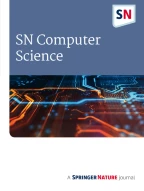Abstract
Sustainable development is crucial for a prosperous future, but epidemic diseases like Coronavirus Disease 2019 (COVID-19) pose real and complex challenges. The global pandemic, declared by the WHO on March 11, 2020, has led to significant loss of life and challenges in public health, economy, food systems, and social life. This research article aims to develop a Machine Learning (ML) model to predict a patient’s COVID-19 diagnosis, as early diagnosis is fundamental for controlling the spread of COVID-19. An investigation of the literature and a research study is conducted to find suitable mathematical methods and measure how they impact prediction models. This paper analyses COVID-19 pandemic deaths, confirmed cases, and recovered individuals using Time Series Analysis (TSA) to study the disease's impacts and understand the TAS. A forecasting model can predict future COVID cases by analyzing trends in time-series and connecting global changes with government restrictions. Since higher predictive accuracy is the limitation of ensemble learning algorithms, better ML approaches are proposed here. Autocorrelation plots clearly showed the results executed for the considered objectives. The hybrid ARIMA algorithm proposed in this work proved adequate results.
Similar content being viewed by others
Data availability
Not applicable.
Code availability
Not applicable.
References
Amit Kumar, Shivani Malhotra, Anuj Katoch, Ashish Sarathkar, Aman Manocha,’ Webinars: An assistive tool used by higher education educators during Covid19 case study’, 12th International Conference on Computational Intelligence and Communication Networks
Shivani Malhotra, Rubina Dutta, Amit Kumar Daminee, Sagar Mahna,’ Paradigm Shift in Engineering Education During COVID-19: From Chalkboards to Talk Boards’, 12th International Conference on Computational Intelligence and Communication Networks
Amit Kumar, Shivani Malhotra, Anuj Katoch, Ashish Sarathkar, Aman Manocha,’ Webinars: An assistive tool used by higher education educators during Covid19 case study’, 12th International Conference on Computational Intelligence and Communication Networks.
S. Panja, A. P. James, ‘ Belief Index for Fake COVID-19 Text Detection’, 2020 IEEE Recent advances in intelligent computational systems (RAICS) | December 03-05, 2020 | Trivandrum
Subhra Debdas, Khushi Roy, Aniket Saha, Sayantan Kundu,’ Analysis and Prediction of Climate Change in PostCovid19 India’, IEEE Digital
Dheeraj Verma, Anup Shukla, Prerna Jain, 2020) ‘COVID-19: Impact on Indian Power Sector’, 5th IEEE International Conference on Recent Advances and Innovations in Engineering (ICRAIE) | 978-1-7281-8867-6/20/$31.00©2020 IEEE.
Nugroho Setio Wibwo, Rendy Mahardika,Kusrini, ‘Twitter data analysis using machine learning to evaluate community compliance in preventing the spread of covid-19’ , 2020 2nd international Conference on cybernetics and intelligent system (ICORIS) | 978-1-7281-7257-6/20/$31.00 ©2020 IEEE.
Kartika Maulida, Hindrayani,Tresna Maulana Fahrudin,Prismahardi Aji R,Eristya Maya Safitri,’ Indonesian stock price prediction including Covid19 era using decision tree regression’, 2020 3rd International Seminar on Research of Information Technology and Intelligent Systems (ISRITI) | 978-1-7281-8406-7/20/$31.00 ©2020 IEEE | DOI: https://doi.org/10.1109/ISRITI51436.2020.9315484
Omar Souissi, Latifa Ibrahimi, Mohamed Assellaou, Mourad Oubrich, ‘Sharing Economy in a context of pandemic propagation: Case of the COVID19’, IEEE Digital
Prema Gawade,Sarang Joshi, ‘Personification and Safety during pandemic of COVID19 using Machine Learning’, Fourth International Conference on Electronics, Communication and Aerospace Technology (ICECA-2020) IEEE Xplore Part Number: CFP20J88-ART; ISBN: 978-1-7281-6387-1.
Josimar Edinson Chire Saire, Jimy Frank Oblitas Cruz, ‘Study of Coronavirus Impact on Parisian Population from April to June using Twitter and Text Mining Approach’, 2020 International Computer Symposium (ICS) | 978-1-7281-9255-0/20/$31.00 ©2020 IEEE | DOI: https://doi.org/10.1109/ICS51289.2020.00056
Francesco Benedetto, Gaetano Giunta, Chiara Losquadro, Luca Pallotta,’Covid-19 Signal Analysis: Effect of Lockdown and Unlockdowns on Normalized Entropy in Italy ‘, 2020 IEEE International Conference on Bioinformatics and Biomedicine (BIBM) 978-1-7281-6215-7/20/$31.00 ©2020 IEEE.
Chiara Antonini, Sara Calandrini, Fabrizio Stracci, Claudio Dario, Fortunato Bianconi,’ Dynamical modelling, calibration and robustness analysis of COVID-19 using Italian data’, 2020 IEEE 20th International Conference on BioInformatics and BioEngineering (BIBE)
Abir Abdullha, Sheikh Abujar, ‘COVID-19: Data Analysis and the Situation Prediction Using Machine Learning Based on Bangladesh perspective’, 2020 15th International Joint Symposium on Artificial Intelligence and Natural Language Processing (iSAI-NLP) | 978-1-6654-1554-5/20/$31.00 ©2020 IEEE.
Nana Ramadijanti, Mu’arifin, Achmad Basuki,’ Comparison of Covid-19 Cases in Indonesia and Other Countries for Prediction Models in Indonesia Using Optimization in SEIR Epidemic Models’, IEEE Digital.
Isarapong E,’ Monitoring the COVID-19 Situation in Thailand’, 2020 1st International Conference on Big Data Analytics and Practices (IBDAP).
Vatsa D, Yadav A, Singh P, et al. An analytical insight of discussions and sentiments of indians on omicron-driven third wave of COVID-19. SN Comput Sci. 2023;4:791. https://doi.org/10.1007/s42979-023-02269-z.
Negreiros RRB, Silva IHS, Alves ALF, et al. COVID-19 diagnosis through deep learning techniques and chest X-Ray images. SN Comput Sci. 2023;4:613. https://doi.org/10.1007/s42979-023-02043-1.
Seth R, Sharaff A. Sentiment data analysis for detecting social sense after COVID-19 using hybrid optimization method. SN Comput Sci. 2023;4:568. https://doi.org/10.1007/s42979-023-02017-3.
Funding
Not applicable.
Author information
Authors and Affiliations
Corresponding author
Ethics declarations
Conflict of interest
Not applicable.
Additional information
Publisher's Note
Springer Nature remains neutral with regard to jurisdictional claims in published maps and institutional affiliations.
This article is part of the topical collection “Soft Computing in Engineering Applications” guest edited by Kanubhai K. Patel.
Rights and permissions
Springer Nature or its licensor (e.g. a society or other partner) holds exclusive rights to this article under a publishing agreement with the author(s) or other rightsholder(s); author self-archiving of the accepted manuscript version of this article is solely governed by the terms of such publishing agreement and applicable law.
About this article
Cite this article
Nramban Kannan, S.K., Kolla, B.P., Sengan, S. et al. Analysis of COVID-19 Datasets Using Statistical Modelling and Machine Learning Techniques to Predict the Disease. SN COMPUT. SCI. 5, 181 (2024). https://doi.org/10.1007/s42979-023-02464-y
Received:
Accepted:
Published:
DOI: https://doi.org/10.1007/s42979-023-02464-y
